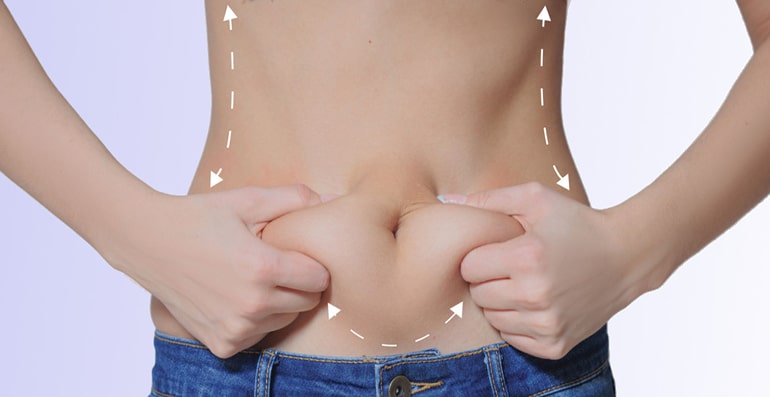After significant weight loss—whether through lifestyle changes or bariatric surgery—the physical transformation can be incredible. But for many individuals, one common challenge remains: excess, sagging skin around the abdomen. That’s where Tummy Tuck surgery in Riyadh comes in, offering a way to complete the transformation by removing loose skin and tightening the abdominal area for a smoother, more sculpted look.
If you’ve worked hard to achieve your weight loss goals, this guide will walk you through what to expect from a tummy tuck after massive weight reduction—before, during, and after the procedure.
Why excess skin remains after weight loss:
When you lose a large amount of weight, especially quickly, your skin doesn’t always have the elasticity to shrink back. This is especially true for:
- Individuals over age 35
- Those with significant weight fluctuations
- Long-term obesity before weight loss
- Genetics affecting skin resilience
The result is often sagging skin in the lower abdomen, sides, and even around the back—causing discomfort, hygiene issues, and a lack of confidence.
How a tummy tuck helps post-weight loss:
A tummy tuck (abdominoplasty) does more than improve appearance—it helps with functionality, comfort, and self-image. After weight loss, the procedure is typically more comprehensive than standard tummy tucks.
What it can address:
- Loose, overhanging abdominal skin
- Stretched or separated abdominal muscles
- Residual fat deposits in the midsection
- Skin folds that cause irritation or infection
Types of tummy tucks often used:
- Extended Tummy Tuck: Targets the abdomen and flanks, ideal for major weight loss patients
- Fleur-de-Lis Tummy Tuck: Removes excess skin both vertically and horizontally
- Belt Lipectomy (Lower Body Lift): Includes the back and buttocks for full 360° contouring
Preparing for the procedure:
Before scheduling your tummy tuck, there are key steps and considerations that ensure the best outcome:
Maintain a stable weight:
- You should be at your goal weight for at least 6 months
- Further weight loss or gain can alter results
Improve nutritional status:
- Eat a balanced, protein-rich diet to promote healing
- Correct any vitamin or mineral deficiencies
Stop smoking:
- Smoking impairs circulation and increases risk of complications
- Most surgeons require quitting 4–6 weeks before and after surgery
Set realistic expectations:
- Scarring will occur, though placed low and often hidden under clothing
- Results are dramatic, but not instant—final results can take 6 months or more
What to expect during surgery:
The tummy tuck procedure for post-weight loss patients is typically more complex due to the extent of loose skin. Here’s what the surgical experience may involve:
- General anesthesia is used
- Surgery may take 3–5 hours depending on complexity
- Excess skin and fat are removed
- Abdominal muscles are tightened with internal sutures
- Drains may be placed to prevent fluid buildup
In some cases, liposuction may be added to refine contour and address remaining fat pockets.
Post-surgery recovery timeline:
Recovery after a tummy tuck post-weight loss is more involved but manageable with proper planning.
Week 1–2:
- Swelling, bruising, and soreness are expected
- Drain tubes may be removed after several days
- Most patients wear compression garments 24/7
Week 3–6:
- Return to light activities and desk jobs
- Gradual improvement in mobility
- Avoid heavy lifting or intense exercise
After 8 weeks:
- Resume full activities with surgeon’s approval
- Scars begin to fade over time
- Final results continue to refine for 6–12 months
Benefits beyond aesthetics:
The impact of a tummy tuck after major weight loss goes far beyond cosmetic appearance. Patients often experience:
- Better posture due to improved core strength
- Relief from skin rashes or infections caused by folds
- Easier exercise and movement
- Improved self-esteem and body image
For many, it’s the final step in reclaiming control over their health and confidence.
Potential risks and considerations:
As with any major procedure, there are risks that should be understood and discussed with your surgeon.
Possible complications include:
- Infection or delayed wound healing
- Seroma (fluid buildup)
- Numbness or changes in skin sensation
- Asymmetry or scarring
Choosing an experienced board-certified plastic surgeon in Riyadh is critical to reduce risk and ensure high-quality outcomes.
How to choose the right surgeon:
Your body has already been through an incredible transformation, so it’s vital to choose a skilled professional for the next step.
Look for:
- Board certification in plastic or reconstructive surgery
- Specialization in post-weight loss body contouring
- Before-and-after gallery of similar patients
- Open communication about expectations and recovery
Patients who choose expert care after Tummy Tuck surgery in Riyadh often report life-changing results that go beyond physical appearance.
Final thoughts:
Losing a significant amount of weight is a major achievement—but for many, the journey doesn’t feel finished until the excess skin is addressed. A tummy tuck after massive weight loss provides not just a cosmetic improvement but also greater comfort, confidence, and quality of life.
With the right preparation, expert care, and a commitment to long-term health, your tummy tuck can be the powerful final chapter in your transformation story.

